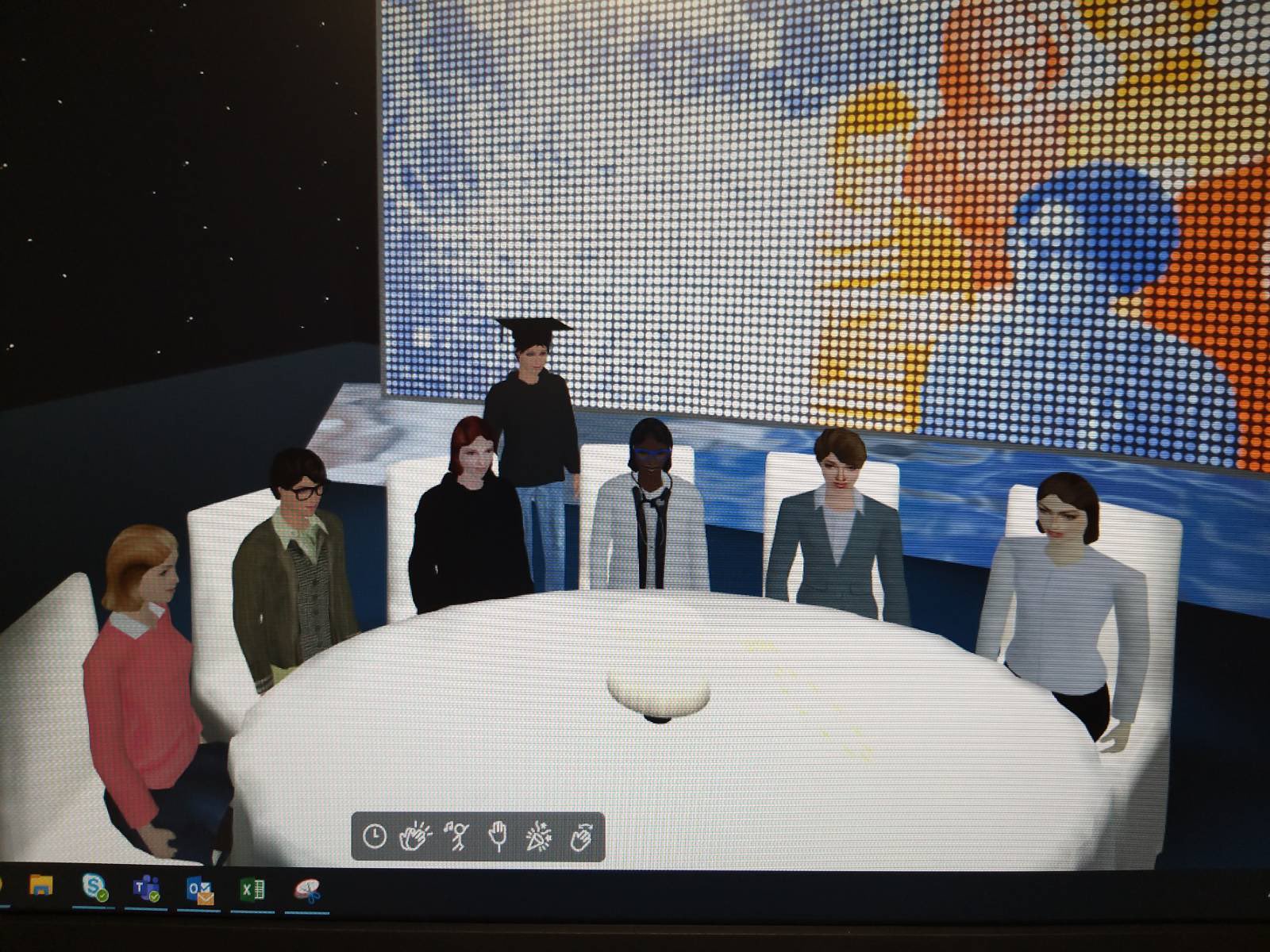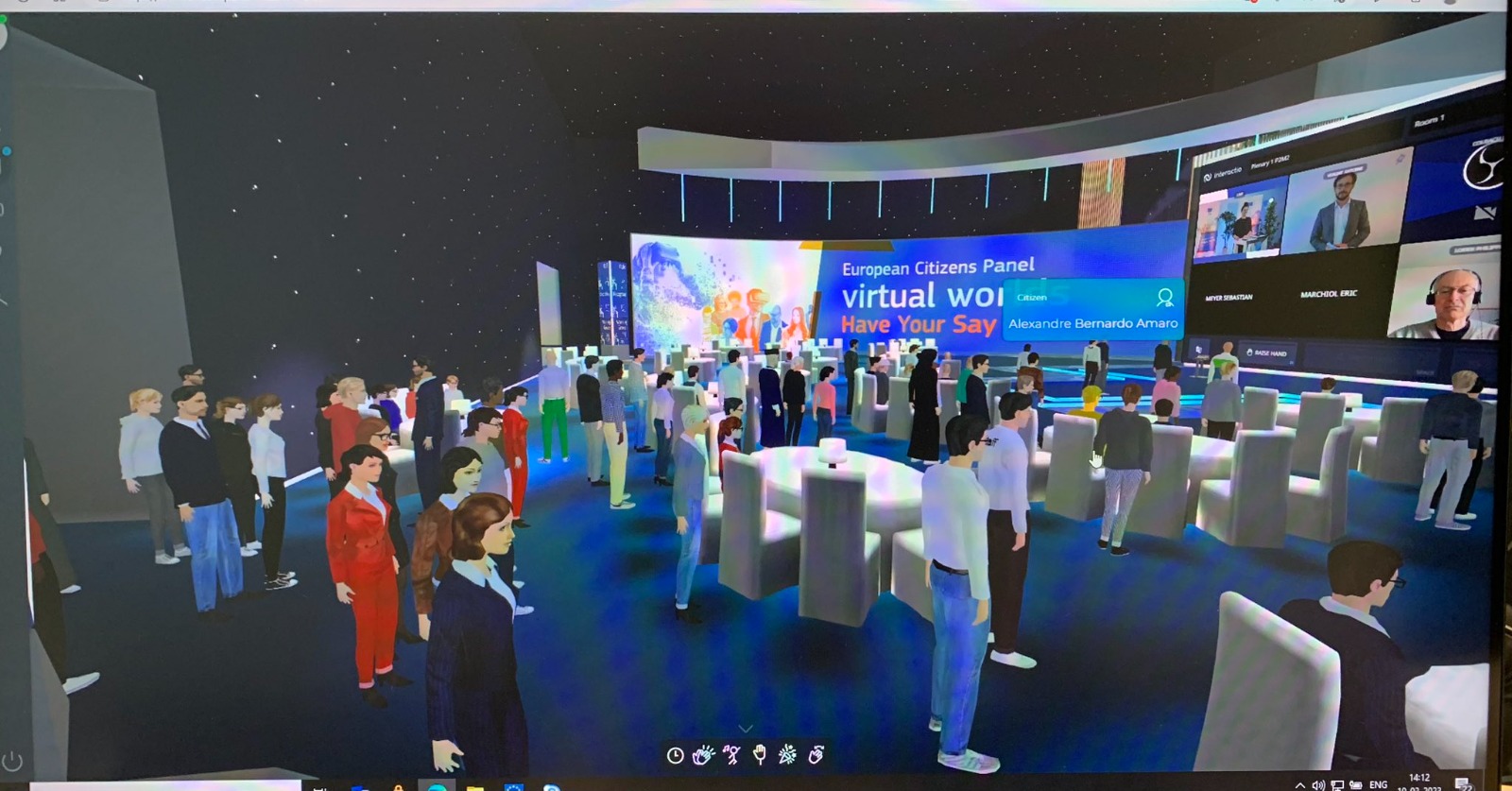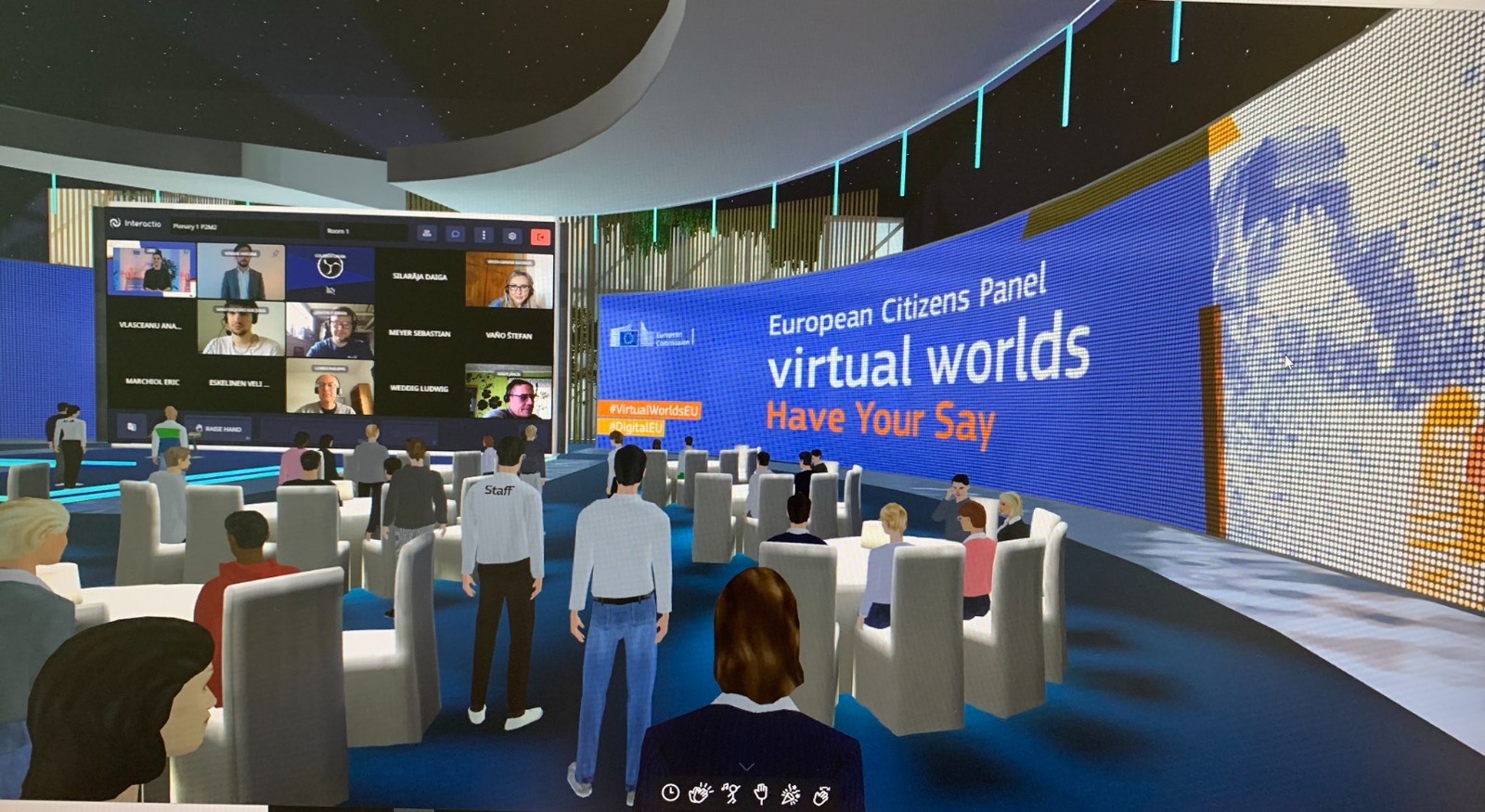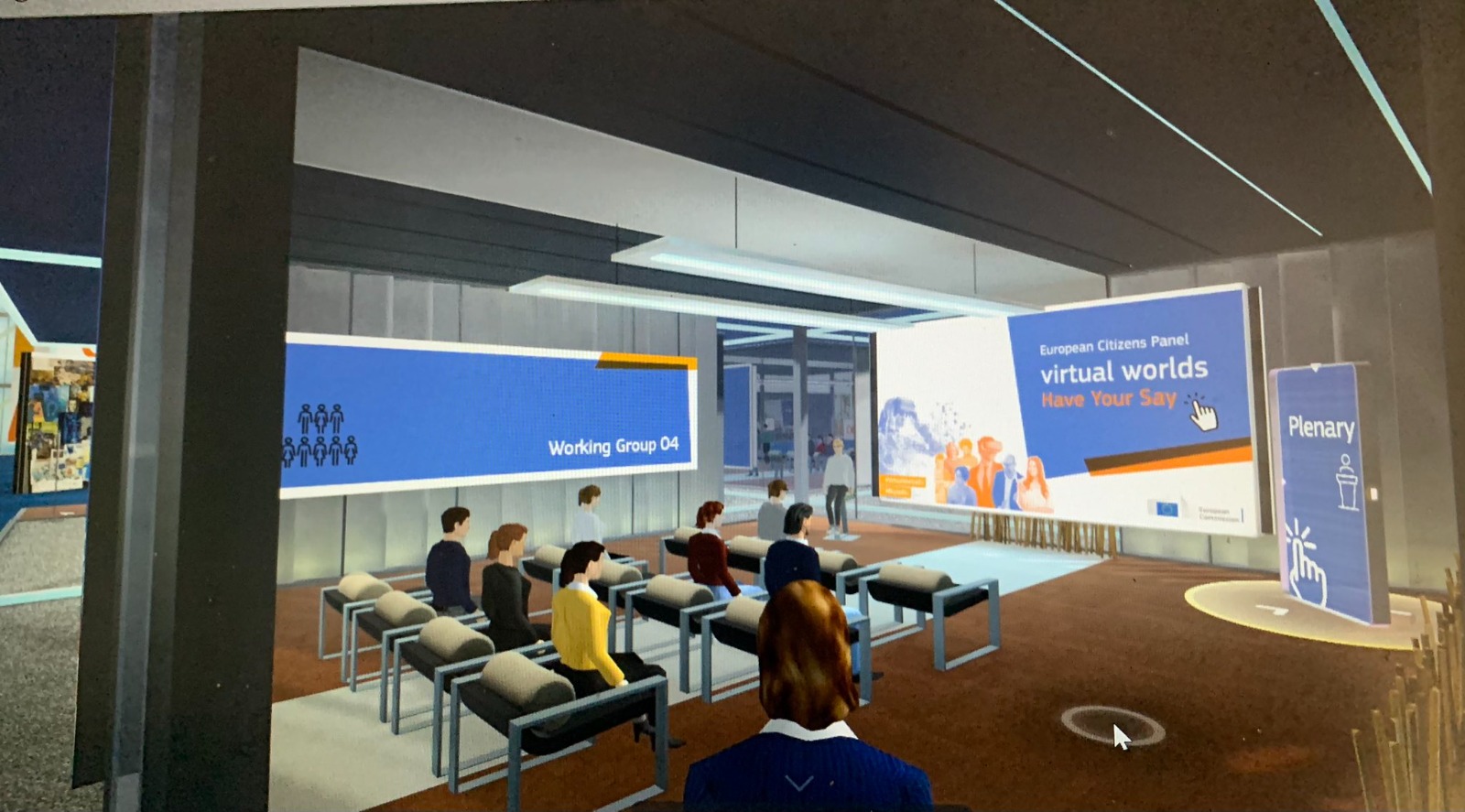During the second session of the European Citizens’ Panel on Virtual Worlds, 150 citizens from 24 European member States were invited by the European Commission to discuss what visions, principles and actions should guide the development of virtual worlds. The innovation? For the first time, they attended the deliberation in a fully virtual 3D setting, also called the Metaverse.
Attending a European Panel and walking through the premises of the European Commission for the first time is quite extraordinary for just about anyone. But experiencing this without having to fly, travel or even leave your sitting room has a very different feel to it. On March 10th, 150 randomly selected citizens turned on their computers and in a few clicks 150 look-alike avatars were standing in front of what was supposed to look like the premises of the European Commission. From the comfort of their homes, they found themselves projected at the heart of the European headquarters in Brussels, ready to dive deep into the European Panel on the topic of Virtual Worlds (see photo below).


Once in the setting, they virtually found their way to the plenary, the amphitheater conference room where all were invited to attend the opening moment, before breaking up into smaller groups to continue the discussion.
The mandate given to them by the European Commission is clear; develop recommendations that will help European policymakers shape the future of the Metaverse.
The majority of participants and staff had positive feedback regarding virtual setting: they felt that the interaction was higher than in a classical 2D digital setting, they engaged with other participants during the breaks (over 60% engaged with their counterparts when they were not in subgroup discussions), which almost never happens in classical digital settings. 66% of citizens had excellent feedback regarding the plenary and the inputs they heard from experts and 91% “enjoyed” the subgroup work.
The virtual setting enabled them to walk around regardless of physical mobility issues, they were able to look at the results they produced during the first session that were displayed in a virtual gallery in front of their working rooms.
On the other hand, the 3D setting was seen as “a distraction” for 10% of citizens.
Through the lens of the Metaverse, citizens better understood the technology on which they are deliberating. For example, the question of access and accessibility became an important topic as some of the participants living in rural areas were struggling to join the session at the beginning because of bandwidth issues.



This session is a worlds’ first as it combines many dimensions: not only were citizens joining a full weekend online in a common virtual place, they also were participating in 24 languages. The technical feat behind the scenes is impressive: almost 100 interpreters, each of which was connected from all over Europe. A large support team made sure that participants found their way and could connect: the week before the session the staff onboarded participants individually in their language. The main moderation was split between a studio in Brussels and a moderator joining from home. Speakers were partly on stage from a physical studio in Brussels, and partly online: the session made the European Metaverse a reality during the entire length of a weekend. Citizens deliberating on their own common future: in varietate concordia – united in diversity.






